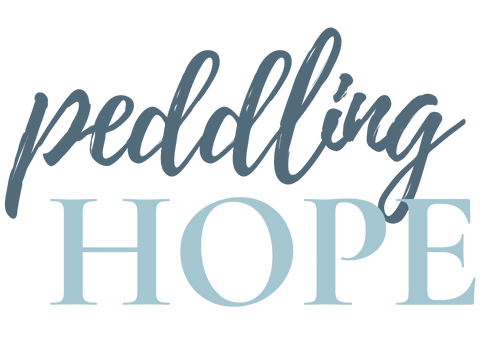Living A Healing-Centred Life
Everything is trauma.
It sounds extreme, but it’s true—if you understand that trauma is a wound rather than an event.
In my first book, Thriving in Chaos, I wrote a chapter called Healing Trauma that explored this idea. But I realized that one chapter wasn’t enough. Healing from trauma deserves an entire book (which I’m in the process of writing now!)
Trauma is complex. But healing? Healing can be simple. Simple—but often difficult. It is a process that requires dedication and mindful practice.
As I observe the world around me, I see people trying to work out their trauma in different ways. Some turn to trauma-dumping or trauma-bonding, sharing their pain with friends, family, and even strangers online.
Others withdraw completely, bottling up their pain. It shows up in their behaviour—becoming distant, overly sad, and irritable. Sometimes, it manifests in unhealthy coping mechanisms like drinking more or changes in weight.
Understanding Trauma in the Body
Trauma wounds are stored in the body. Our nervous system shifts into a stress response—and sometimes, it gets stuck there.
Have you ever experienced thoughts that come a million-miles-an-hour. Ruminating on something you said in a conversation you can’t stop thinking about? Feeling your heart pound, palms sweat, breath quicken?
That’s a trauma loop. The body’s alarm system is activated—even when there’s no immediate danger.
Once the system is stuck, it filters everything through a lens of DANGER!
Traffic - danger!
Kid’s late from school - danger!
Bills coming in - danger!
Your nervous system doesn’t differentiate between minor stressors and real threats. I often say it’s like having a guard dog that barks at every falling leaf.
How Do We Reset the Nervous System?
Healing the nervous system takes time, practice, and self-awareness.
Get into the body. Calming the nervous system starts with physical interventions—breathwork, movement, and grounding techniques.
Talk it through. A therapist can help organize trauma into a coherent narrative. Our brains file experiences as memories when they have a beginning, middle, and end. Otherwise, they stay unresolved.
Observe with curiosity. Noticing patterns—your triggers, your responses—helps you create space between stimulus and reaction.
Healing is both personal and collective. Trauma wounds don’t exist in isolation. The world we live in can make healing feel like an uphill battle—loud, chaotic, unpredictable. That’s why creating safe, healing-centered spaces is so important.
Connecting in an Unpredictable Space
As a teacher and therapist, I was trained to create trauma-informed spaces. That doesn’t mean avoiding hard topics. It means being mindful of what might cause additional stress or harm.
A friend recently shared a small but powerful example. She had a meeting with a colleague, and before diving into heavy conversation, her colleague paused and asked: Do you have the capacity for this right now?
That simple check-in changed everything. It gave my friend a moment to assess her own emotional bandwidth. She felt seen. Validated. And because she did have capacity, their conversation continued—without unnecessary emotional strain.
This is trauma-informed connection. A practice of checking in, giving space, and prioritizing emotional well-being.
Healing as a collective
In South African culture, there is a concept called Ubuntu, which emphasizes human interdependence. It’s a reminder that our well-being is tied to the collective. In practice, it looks like thoughtful engagement—reading the room before adding to a conversation, ensuring we aren’t placing an emotional burden on someone who may already be at capacity.
How often do you experience that in your day-to-day interactions? More importantly, how often do you practice it with others?
Shifting to a Healing-Centred Approach
Ubuntu is about loving action, community engagement, and collective healing. A healing-centred approach recognizes that trauma is not just personal—it’s shared.
Think about the last few years. The pandemic. Global conflicts. Political divides. These events have shaped our collective nervous system. More than ever, we need spaces that foster healing, not just survival.
That said, I thought the best way to end my series on living from presence (or mindful-based living) was to talk about the collective.
So how can we create a more healing-centered world?
One-on-One: If you practice mindful presence, start expanding that awareness to others. Notice body language. Is someone stiff, breathing heavily, withdrawing? Check in. A simple “How are you really doing?” can make a difference.
Small Groups: In conversations, be mindful of those who may be feeling overwhelmed. If you notice someone withdrawing, gently ask if they’d like to shift the topic or take a break.
Big Groups: Large gatherings can be overstimulating. I recently attended a weekend-long training. By the last day, I hit a wall. I turned to my travel partner and said, “I think I need to leave early.” Thankfully, they had been checking in with me, making it safe for me to honour my own limits.
Online Spaces: Social media can be overwhelming. Before posting, ask yourself:
Why am I sharing this?
Who is my audience?
What is their capacity right now?
A helpful tool is the THINK acronym before posting:
T - Is it true? Evidence-based?
H - Is it helpful?
I - Is it inspiring or hopeful?
N - Is it necessary? Or just more noise?
K - Is it kind? How might it affect others?
Many of us post online with the best intentions—to inform, to raise awareness. But without balance, it can lead to information overload. And overload makes it harder for our systems to feel safe.
Healing the Individual, Healing the Collective
Healing isn’t just personal—it’s communal. When we heal ourselves, we contribute to the healing of those around us.
So as you move through the world, ask yourself: How can I create space for healing today? For myself? For others?
Because when we create safety, when we practice mindfulness, when we choose joy—we build a world where healing isn’t just possible. It’s inevitable.
